- Home
- Joyce Carol Oates
The Man Without a Shadow Page 3
The Man Without a Shadow Read online
Page 3
“I am not a ‘doctor’—I am a professor. I have a Ph.D. of course but that is not essential! Please just call me—”
“‘Professor Fer-ris.’ Yes.”
“And I have explained—I am not a clinician.”
This is a way of telling the subject I am not a medical doctor. You are not my patient.
But E.H. seems to purposefully misunderstand, awkwardly joking: “Well, Professor—that makes two of us. I am not a clinician, either.”
E.H. has spoken a little too loudly. Is this a way of signaling irritation with Professor Ferris? Since his attention has been forcibly removed from black-haired Margot Sharpe?
(Margot wonders too if E.H. is speaking quickly as if to signal, subliminally, that he isn’t much interested in the information that Milton Ferris is providing him; despite his severe amnesia E.H. “remembers” enough from previous exchanges to know that he won’t remember this information, either, thus resents being given it.)
While his visitors look on E.H. leafs through his little notebook until he comes to a crucial page. He smiles, showing the page to Margot rather than to Ferris—a drawing of two tennis players, one of them wildly flailing with his racket as a ball sails over his head. (Is this player meant to be E.H.? The player’s hair and features suggest that this is so. And the other player, with a blurred face and exaggerated grin, is meant to be—Death?)
“This—‘tennis’—I used to play. Pretty damned good on the Amherst team. Are we going to play ‘tennis’ now?”
“Eli, you’re an excellent tennis player. You can play tennis another day. But right now, if you’d like to take a seat, and . . .”
“‘Excellent’? Is that so? But I have not played tennis in a long time, I think.”
“In fact, Eli, you played tennis just last week.”
Eli stares at Ferris. This is not what Eli has expected to hear and he seems incapable of absorbing it but without missing a beat Ferris says in a warm and uplifting voice, “Now, Eli, you’ve always trounced me. And it has been reported to me not only that you’d played with one of the best players on the staff but you’d won each game.”
“‘Reported’—really!”
E.H. laughs, faintly incredulous.
Margot sees: the poor man is feeling the unease of one being made to understand that the most complete knowledge of himself can come only from the outside—from strangers.
A melancholy conviction, Margot thinks, to realize that you can’t know yourself as reliably as strangers can know you!
Patiently Milton Ferris explains to E.H. why he has been brought to the Institute that morning, and why Ferris and his laboratory are going to be “testing” him—as they’d done in the past; E.H. listens politely at first, then becomes bemused and beguiled by Margot whom he has rediscovered: she is wearing a black wraparound skirt with black tights beneath, a black jersey pullover that fits her petite frame tightly, and black ballerina flats—the clothes of a schoolgirl dancer and not the crisp white lab coats of the medical staff or the dull-green uniforms of the nursing staff. There is no laminated ID on her lapel to inform him of her name.
Annoyed, Ferris says: “Whenever you’d like to begin, Mr. Hoopes—Eli. That’s why we’re here.”
“Why you are here, Doctor. But why am I here?”
“You’ve enjoyed our tests in the past, Eli, and I think you will again.”
“That’s why I am here—to ‘enjoy’ myself?”
“We are hoping to establish some facts concerning memory. We are hoping to explore the question of whether memory is ‘global’ in the brain—not localized; or whether it is localized. And you have been helping us, Eli.”
“Have they kicked me out of the office?—has someone taken my place? My brother Averill, and my uncle—” E.H. pauses as if, for a vexed moment, he can’t recall the name of one of his Hoopes relatives, an executive at Hoopes & Associates, Inc.; then he rallies, with one of his enigmatic remarks: “Where else would I be, if I could be somewhere else?”
Milton Ferris assures E.H. that he is in “just the right place, at just the right time to make history.”
“Did I tell you? I’ve heard Reverend King speak. Several times. That is ‘history.’”
“Yes. An extraordinary man, Reverend King . . .”
“He spoke in Philadelphia on the steps of the Free Library, and he spoke in Birmingham, Alabama, at a Negro church that was subsequently burnt to the ground by white racists. He is a very brave man, a saint. He is a saint of courage. I intend to march with him again when my condition improves—as I’ve been promised.”
“Of course, Eli. Maybe we can help arrange that.”
“It’s because I was clubbed on the head—billy clubbed—in Alabama. Did I show you? The scar, where my hair doesn’t grow . . .”
E.H. lowers his head, flattens his thick dark hair to show them a faint zigzag line in his scalp. Margot feels an impulse to reach out and touch it—to stroke the poor man’s head.
She understands—It’s loneliness he feels most.
“Yes, you did show us your scar, Eli. You’re a very lucky man to have escaped with your life.”
“Am I! You think that’s what I managed, Doctor—to ‘escape with my life.’” E.H. laughs sadly.
Milton Ferris continues to speak with E.H., humoring him even as he soothes him. Margot can imagine Ferris calming an excited laboratory animal, a monkey for instance, as it is about to be “sacrificed.”
For such is the euphemism in experimental science. The lab animals are not killed, certainly not murdered: they are sacrificed.
Shortly, in E.H.’s presence, you come to see that the amnesiac’s smiling is less childlike and eager than desperate, and piteous. His is the eagerness of a drowning person hoping to be rescued by someone, anyone, with no idea what rescue might be, or from what.
In me he sees—something. A hope of rescue.
In profound neural impairments there may yet be isolated islands of memory that emerge unpredictably; Margot wonders if her face, her voice, her very scent might trigger dim memories in E.H.’s ruin of a brain, so that he feels an emotion for her that is as inexplicable to him as it might be to anyone else. Even as he tries to listen to Dr. Ferris’s crisp speech he is looking longingly at Margot.
Margot has seen laboratory animals rendered helpless, though still living and sensate, after the surgical removal of parts of their brains. And she has read everything she could get her hands on, about amnesia in human beings. Still it is unnerving for her to witness such a condition firsthand, in a man who might pass, at a little distance, as normal-seeming—indeed, charismatic.
“Very good, Eli! Would you like to sit down at this table?”
E.H. smiles wryly. Clearly, he doesn’t want to sit down; he is most at ease on his feet, so that he can move freely about the room. Margot can imagine this able-bodied man on the tennis court, fluid in motion, not wanting to be fixed in place and so at a disadvantage.
“Here. At this table, please. Just take a seat . . .”
“‘Take a seat’—where take it?” E.H. smiles and winks. He makes a gesture as if about to lift a chair; his fingers flutter and flex. Ferris laughs extravagantly.
“I’d meant to suggest that you might sit in a chair. This chair.”
E.H. sighs. He has hoped to humor this stranger with the fiercely white short-trimmed beard and winking eyeglasses who speaks to him so familiarly.
“Heil yes—I mean, hell yes—Doctor!”
E.H.’s smile is so affable, he can’t have meant any insult.
As they prepare to begin the morning’s initial test E.H.’s attention is drawn away from Margot who plays no role at all except as observer. And Margot has eased into the periphery of the subject’s vision where probably he can’t see her except as a wraith. She assumes that he has forgotten the names of others in the room to whom he’d been introduced—Kaplan, Meltzer, Rubin, Schultz. It is a relief to her not to be competing with Milton Ferris for the amnesiac’s p
recarious attention.
After his illness E.H.’s performance on memory tests showed severe short-term loss. Asked by his testers to remember strings of digits, he wavered between five and seven. Now, months later, he can recall and recite nine numbers in succession, when required; sometimes, ten or eleven. Such a performance is within the normal range and one would think that E.H. is “normal”—his manner is calm, methodical, even rather robotic; then as complications are introduced, as lists become longer, and there are interruptions, E.H. becomes quickly confused.
The experiment becomes excruciating when lists of digits are interrupted by increasing intervals of silence, during which the subject is required to “remember”—not to allow the digits to slip out of consciousness. Margot imagines that she can feel the poor man straining not to lose hold—the effort of “rehearsing.” She would like to clasp his hand, to comfort and encourage him. I will help you. You will improve. This will not be your entire life!
Impairment is the great leveler, Margot thinks. Eighteen months ago, before his illness, Elihu Hoopes would scarcely have glanced twice at Margot Sharpe. She is moved to feel protective toward him, even pitying, and she senses that he would be grateful for her touch.
Forty intense minutes, then a break of ten minutes before tests continue at an ever-increasing pace. E.H. is eager and hopeful and cooperative but as the tests become more complicated, and accelerated, E.H. is thrown into confusion ever more quickly (though he tries, with extraordinary valor, to maintain his affable “gentlemanly” manner). As intervals grow longer, he seems to be flailing about like a drowning man. His short-term memory is terribly reduced—as short as forty seconds.
After two hours of tests Ferris declares a longer break. The examiners are as exhausted as the amnesiac subject.
E.H. is given a glass of orange juice, which is his favorite drink. He hasn’t been aware until now that he’s thirsty—he drinks the juice in several swallows.
It is Margot Sharpe who brings E.H. the orange juice. This female role of nurturer-server is deeply satisfying to her for E.H. smiles with particular warmth at her.
She feels a mild sensation of vertigo. Surely, the amnesiac subject is perceiving her.
Restless, exhausted without knowing (recalling) why, E.H. stands at a window and stares outside. Is he trying to determine where he is? Is he trying to determine who these strangers are, “testing” him? He is a proud man, he will not ask questions.
Like an athlete too long restrained in a cramped space or like a rebellious teenager E.H. begins to circle the room. This behavior is just short of annoying—perhaps it is indeed annoying. E.H. ignores the strangers in the room. E.H. flexes his fingers, shakes his arms. He stretches the tendons in his calves. He reaches for the ceiling—stretching his vertebrae. He mutters to himself—(is he cursing?)—yet his expression remains affable.
“Mr. Hoopes? Would you like your sketchbook?”—one of the Institute staff asks, handing the book to him.
E.H. is pleased to see the sketchbook. E.H. is (perhaps) surprised to see the sketchbook. He pages through it frowning, holding the book in such a way to prevent anyone else seeing its contents.
Then, he discovers his little notebook in a shirt pocket. This he opens eagerly, and peruses. He records something in the notebook, and slips it back into his pocket. He looks into the sketchbook again, discovers something he doesn’t like and tears it out, and crumples it in his hand. Margot is fascinated by the amnesiac’s behavior: Is it coherent, to him? Is there a purpose to it? She wonders if, before his illness, he’d kept a little notebook like this one, and carried an oversized sketchbook around with him; possibly he had. And so the effort of remembering these now is not unusual.
If he believes himself alone, with no one close to observe him, E.H. ceases smiling. He’s frowning and somber like one engrossed in the heart-straining effort of trying to figure things out.
Margot thinks how sad, how exhausting, the amnesiac can’t remember that he has been involved in this effort for any sustained period of time. He might have been in this place for a few minutes, or a few hours. He seems to know that he doesn’t live here, but he has no clear idea that he is living with a relative in Gladwyne and not by himself in Philadelphia as he’d been at the time of his illness.
No matter how many times a test involving rote memory is repeated, E.H. never improves. No matter how many times E.H. is given instructions, he has to be given the instructions yet another time.
The amnesiac’s brain resembles a colander through which water sifts continually, and never accumulates; those years before his illness, which constitute most of the man’s life of thirty-eight years, resemble a still, distant water glimpsed through dense foliage as in a hallucinatory landscape by Cézanne.
Margot wonders if there can be some residual, unfathomable memory in the part of E.H.’s brain that has been damaged? Whether, at the periphery of the damage, in adjoining tissue, some sort of neurogenesis, or brain repair, might take place? And could such neurogenesis be stimulated?
So relatively little is known of the human brain, after so many millennia! The brain is the only organ whose functions must be theorized from observed behavior, and whose basic physiology is scarcely comprehended at the present time—that is, 1965. Only animal brains can be examined “live”—primarily monkey brains. Invasive exploration of the (living, normal) human brain is forbidden. Margot wonders: Are complex memories distributed throughout the cerebral cortex, or localized?—and if localized, how? From what is known of E.H.’s brain, the hippocampus and adjacent tissue had been devastated by the viral infection—but have other parts of the brain remained unimpaired? Unless E.H. undergoes brain surgery, Margot thinks, or sophisticated scanning machines are developed to “X-ray” the brain, it isn’t likely that the precise anatomy of E.H.’s brain will be known until after his death when the brain can be autopsied.
In that instant Margot feels a glimmer of horror, and excitement. She sees E.H. on a marble slab in a morgue: a corpse, skull sawed open. The pathologist will remove the brain that will be fixed, sectioned, stained, examined and analyzed by the neuroscientist.
She will be the neuroscientist.
E.H. glances worriedly at her as if he can read her thoughts. Margot feels her face burn like one who has dared to touch another intimately, and has been detected.
But I will be your friend, Mr. Hoopes!—Eli.
I will be the one you can trust.
“Unlocking the mystery of memory”—Margot Sharpe will be among the first.
With an uplifted forefinger, to retain Margot’s attention, E.H. leafs through his little notebook in search of something significant. In his bright affable voice he reads:
“‘There is no journey, and there is no path. There is no wisdom, there is emptiness. There is no emptiness.’” He pauses to add, “This is the wisdom of the Buddha. But there is no wisdom, and there is no Buddha.” He laughs, with inexplicable good humor.
His examiners stare at him, unable to join in.
TESTING RESUMES. E.H. appears eager again, hopeful.
It is hard to comprehend: to the subject, the morning’s adventure is only now beginning. He has forgotten that he is “tired.”
Like appetite, “tiredness” depends much upon memory. Margot would not have believed this could be so—it seems unnatural!
A scientist soon learns: much in Nature is “unnatural.”
At this midpoint Milton Ferris departs. He has an appointment—a luncheon perhaps. The principal investigator entrusts his assistants to run the tests he has designed without his supervision.
Margot follows instructions diligently: even when she knows what to do next she waits for Alvin Kaplan, Ferris’s protégé, to instruct her. Testing E.H. is laborious, repetitive, yet fascinating—memory tests of various kinds, auditory and visual, of gradually increasing complexity.
One of the tests seems purposefully designed to frustrate and discourage the subject. E.H. is instructed by Kaplan
to count “as high as you can without stopping.” E.H. begins counting and continues for an impressively long time, beyond seventy seconds; his counting is methodical, by rote. Then, at numeral eighty-nine, Kaplan interrupts, distracting E.H. by showing him a card with an elaborate geometrical design E.H. is asked to describe—“Looks like three pyramids upside down or maybe—pineapples?”
And now when Kaplan asks E.H. to continue with his counting, E.H. is utterly baffled. He has no idea how to proceed.
“‘Counting’—what? What was I ‘counting’?”
“You were counting numbers ‘as high as you can’—then you stopped to describe this card. But now, Eli, you can continue.”
“‘Continue’—what?”
“You don’t remember the count?”
“‘Count’—? No. I don’t remember.”
E.H. stares at the illustrated card that has distracted him, registering now that it is a trick.
“I played cards when I was a little boy. I played checkers and chess, too.” E.H. glances about as if looking for more cards, or game boards.
E.H.’s fingers twitch. His usually affable eyes glare with fury. How he would like to tear into bits the stupid card with a picture of pyramids, or pineapples!
Seeing the look in E.H.’s face Margot feels a twinge of guilt. She wonders if the test isn’t cruel after all—mental cruelty. Though E.H. has clearly enjoyed being the epicenter of attention until now.
Margot thinks—But he won’t remember! He will forget.
She thinks of those laboratory animals of decades past whose vocal cords were sometimes cut—monkeys, dogs, cats. So that their cries of pain and terror could not be expressed; their torturers were spared hearing, and did not need to register their suffering. Before a new and more humane era of animal experimentation but well within the memory of Milton Ferris, she is sure.
Ferris has often joked of the new “humane” era—its restrictions on animal research, the zealotry of “animal terrorists” protesting experiments of the kind he’d done himself not long ago with splendid results.
Margot does not like to speculate how she would have behaved in such laboratories, in the past. Would she have protested the suffering of animals? Or would she have silently, shamefully concurred?—for to have objected would have been tantamount to being expelled from the great man’s lab, and from a career in neuroscience itself.

 Starr Bright Will Be With You Soon
Starr Bright Will Be With You Soon My Heart Laid Bare
My Heart Laid Bare A Fair Maiden
A Fair Maiden The Doll-Master and Other Tales of Terror
The Doll-Master and Other Tales of Terror Wild Nights!: Stories About the Last Days of Poe, Dickinson, Twain, James, and Hemingway
Wild Nights!: Stories About the Last Days of Poe, Dickinson, Twain, James, and Hemingway Two or Three Things I Forgot to Tell You
Two or Three Things I Forgot to Tell You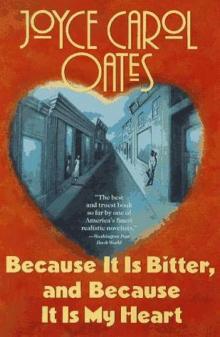 Because It Is Bitter, and Because It Is My Heart
Because It Is Bitter, and Because It Is My Heart Missing Mom: A Novel
Missing Mom: A Novel The Gravedigger's Daughter: A Novel
The Gravedigger's Daughter: A Novel American Appetites
American Appetites Black Dahlia White Rose: Stories
Black Dahlia White Rose: Stories Zombie
Zombie Soul at the White Heat: Inspiration, Obsession, and the Writing Life
Soul at the White Heat: Inspiration, Obsession, and the Writing Life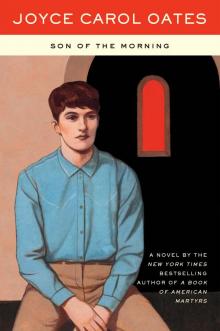 Son of the Morning
Son of the Morning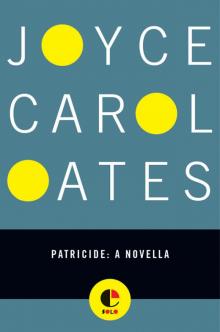 Patricide
Patricide Snake Eyes
Snake Eyes Wonderland
Wonderland In Rough Country: Essays and Reviews
In Rough Country: Essays and Reviews Little Bird of Heaven
Little Bird of Heaven The Haunting
The Haunting The Accursed
The Accursed My Sister, My Love: The Intimate Story of Skyler Rampike
My Sister, My Love: The Intimate Story of Skyler Rampike Dis Mem Ber and Other Stories of Mystery and Suspense
Dis Mem Ber and Other Stories of Mystery and Suspense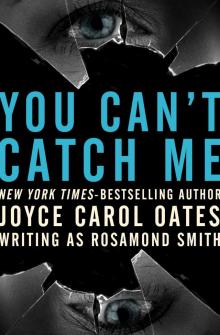 You Can't Catch Me
You Can't Catch Me Daddy Love: A Novel
Daddy Love: A Novel Broke Heart Blues
Broke Heart Blues I'll Take You There
I'll Take You There Mystery, Inc.
Mystery, Inc. We Were The Mulvaneys
We Were The Mulvaneys The Lost Landscape: A Writer's Coming of Age
The Lost Landscape: A Writer's Coming of Age Evil Eye: Four Novellas of Love Gone Wrong
Evil Eye: Four Novellas of Love Gone Wrong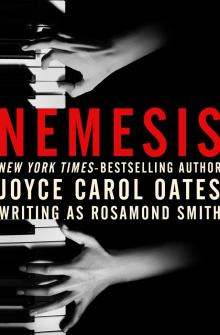 Nemesis
Nemesis Beautiful Days: Stories
Beautiful Days: Stories On Boxing
On Boxing Mudwoman
Mudwoman Hazards of Time Travel
Hazards of Time Travel Night-Gaunts and Other Tales of Suspense
Night-Gaunts and Other Tales of Suspense Mysteries of Winterthurn
Mysteries of Winterthurn New Jersey Noir
New Jersey Noir Sourland
Sourland Blonde
Blonde The Corn Maiden: And Other Nightmares
The Corn Maiden: And Other Nightmares The Oxford Book of American Short Stories
The Oxford Book of American Short Stories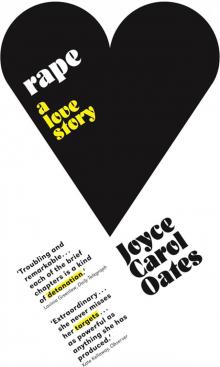 Rape: A Love Story
Rape: A Love Story Lovely, Dark, Deep: Stories
Lovely, Dark, Deep: Stories After the Wreck, I Picked Myself Up, Spread My Wings, and Flew Away
After the Wreck, I Picked Myself Up, Spread My Wings, and Flew Away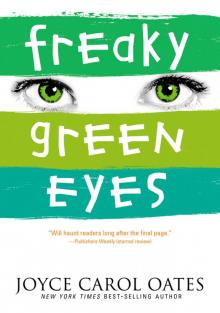 Freaky Green Eyes
Freaky Green Eyes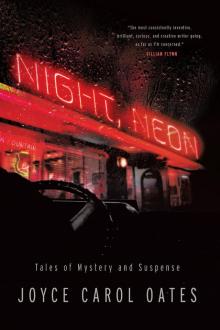 Night, Neon
Night, Neon I Am No One You Know: And Other Stories
I Am No One You Know: And Other Stories Black Water
Black Water Expensive People
Expensive People The Falls
The Falls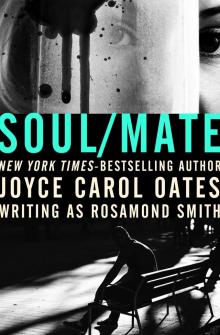 Soul/Mate
Soul/Mate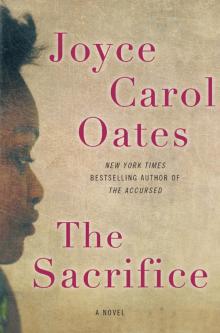 The Sacrifice
The Sacrifice The (Other) You
The (Other) You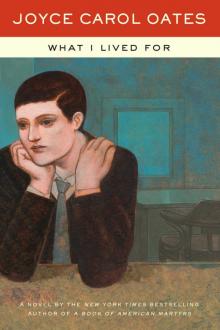 What I Lived For
What I Lived For Prison Noir
Prison Noir High Crime Area: Tales of Darkness and Dread
High Crime Area: Tales of Darkness and Dread Faithless: Tales of Transgression
Faithless: Tales of Transgression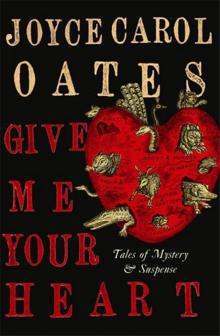 Give Me Your Heart: Tales of Mystery and Suspense
Give Me Your Heart: Tales of Mystery and Suspense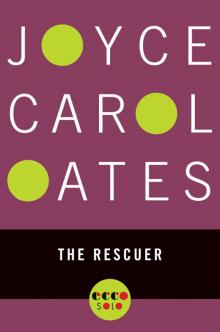 The Rescuer
The Rescuer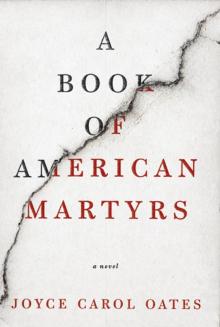 A Book of American Martyrs
A Book of American Martyrs American Melancholy
American Melancholy Double Delight
Double Delight Big Mouth Ugly Girl
Big Mouth Ugly Girl Bellefleur
Bellefleur Solstice
Solstice Big Mouth & Ugly Girl
Big Mouth & Ugly Girl Evil Eye
Evil Eye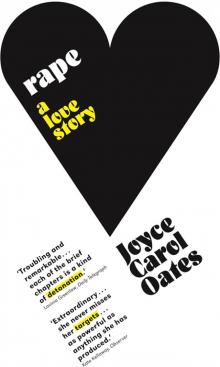 Rape
Rape The Man Without a Shadow
The Man Without a Shadow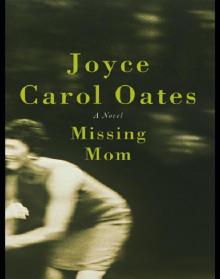 Missing Mom
Missing Mom My Sister, My Love
My Sister, My Love The Gravedigger's Daughter
The Gravedigger's Daughter Beautiful Days
Beautiful Days The Lost Landscape
The Lost Landscape Daddy Love
Daddy Love Dreams from the Witch House: Female Voices of Lovecraftian Horror
Dreams from the Witch House: Female Voices of Lovecraftian Horror The Tattooed Girl
The Tattooed Girl Give Me Your Heart
Give Me Your Heart In Rough Country
In Rough Country The Journal of Joyce Carol Oates
The Journal of Joyce Carol Oates Black Dahlia & White Rose: Stories
Black Dahlia & White Rose: Stories High Crime Area
High Crime Area Lovely, Dark, Deep
Lovely, Dark, Deep A Widow's Story
A Widow's Story Soul at the White Heat
Soul at the White Heat Wild Nights!
Wild Nights!